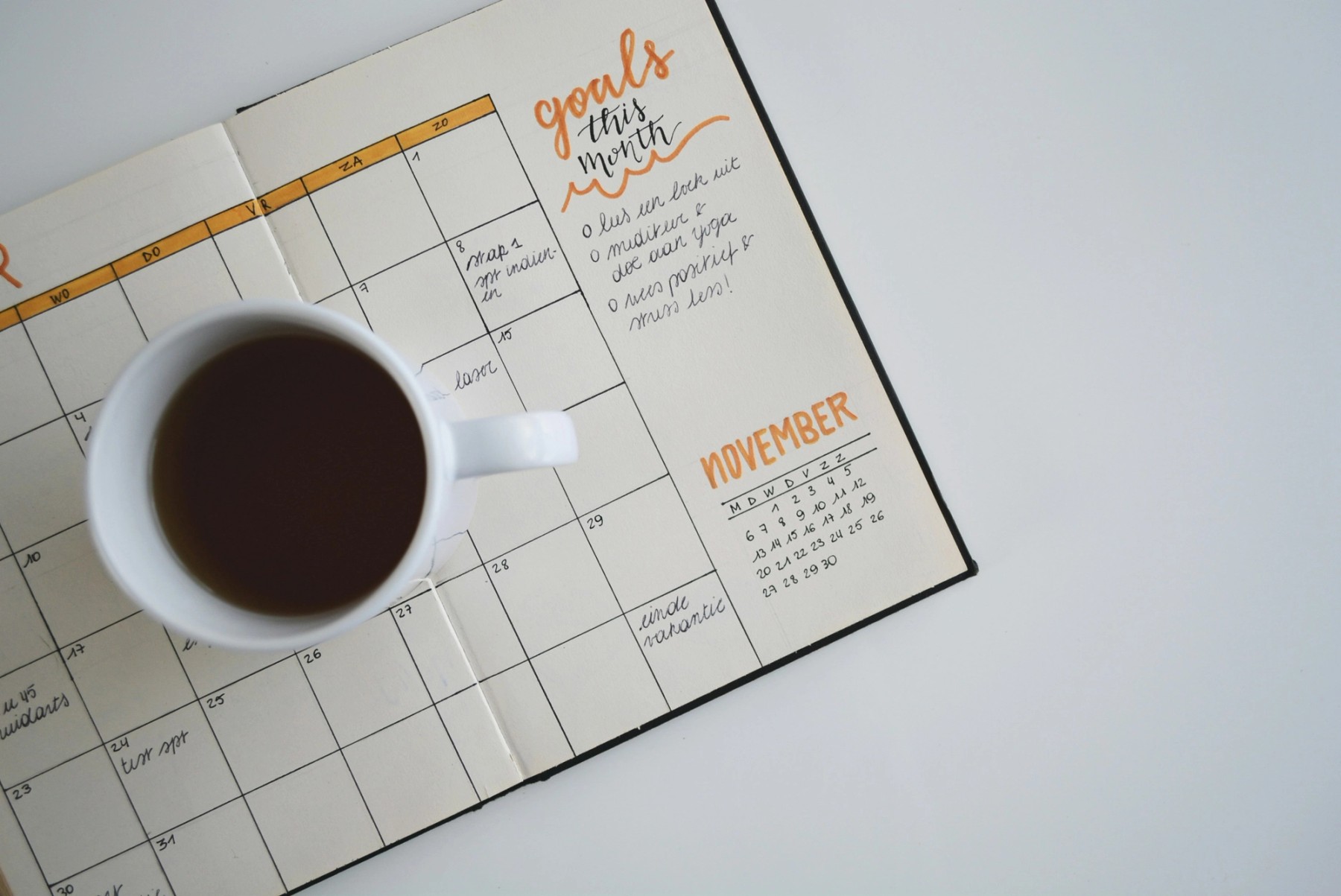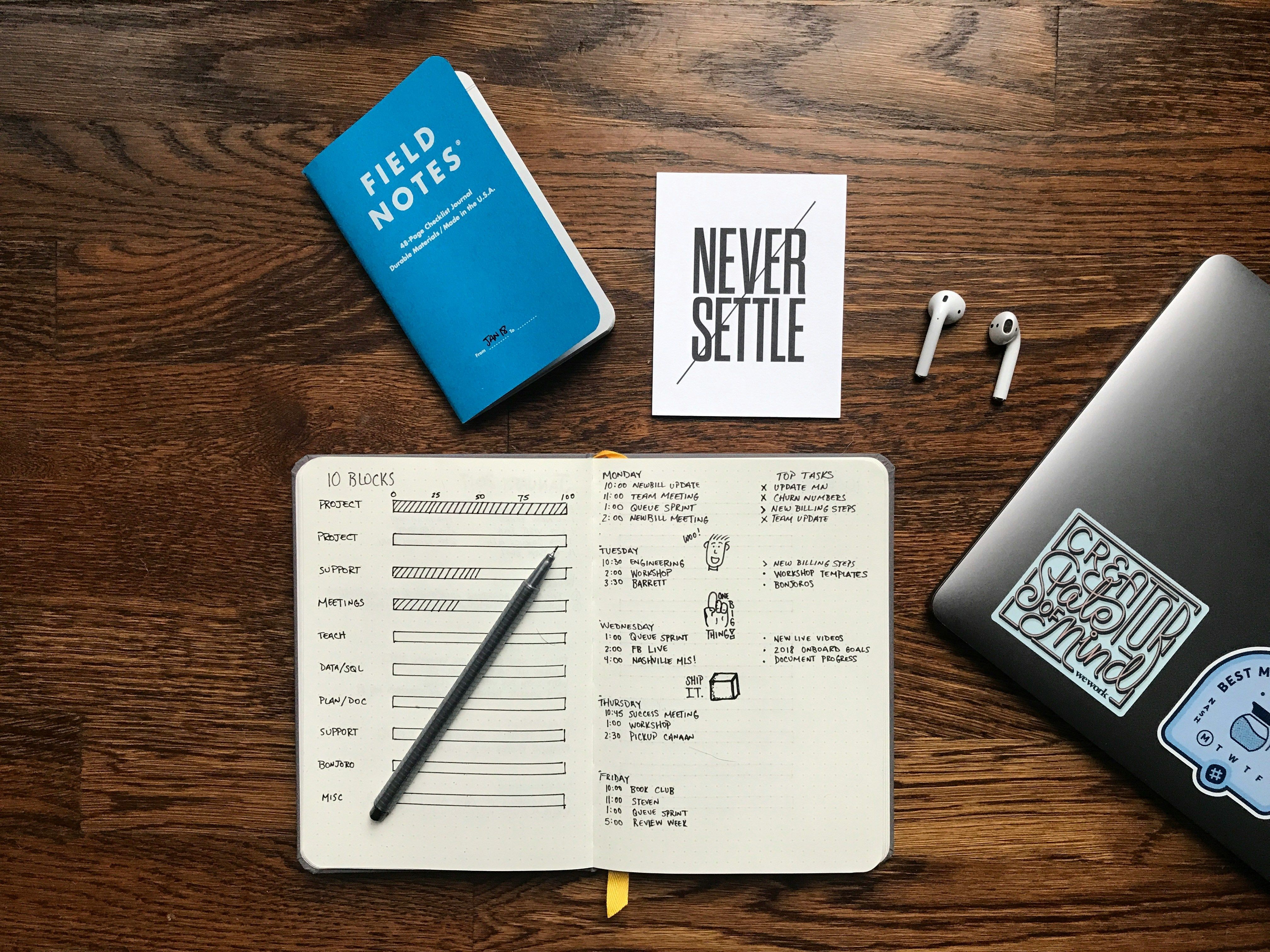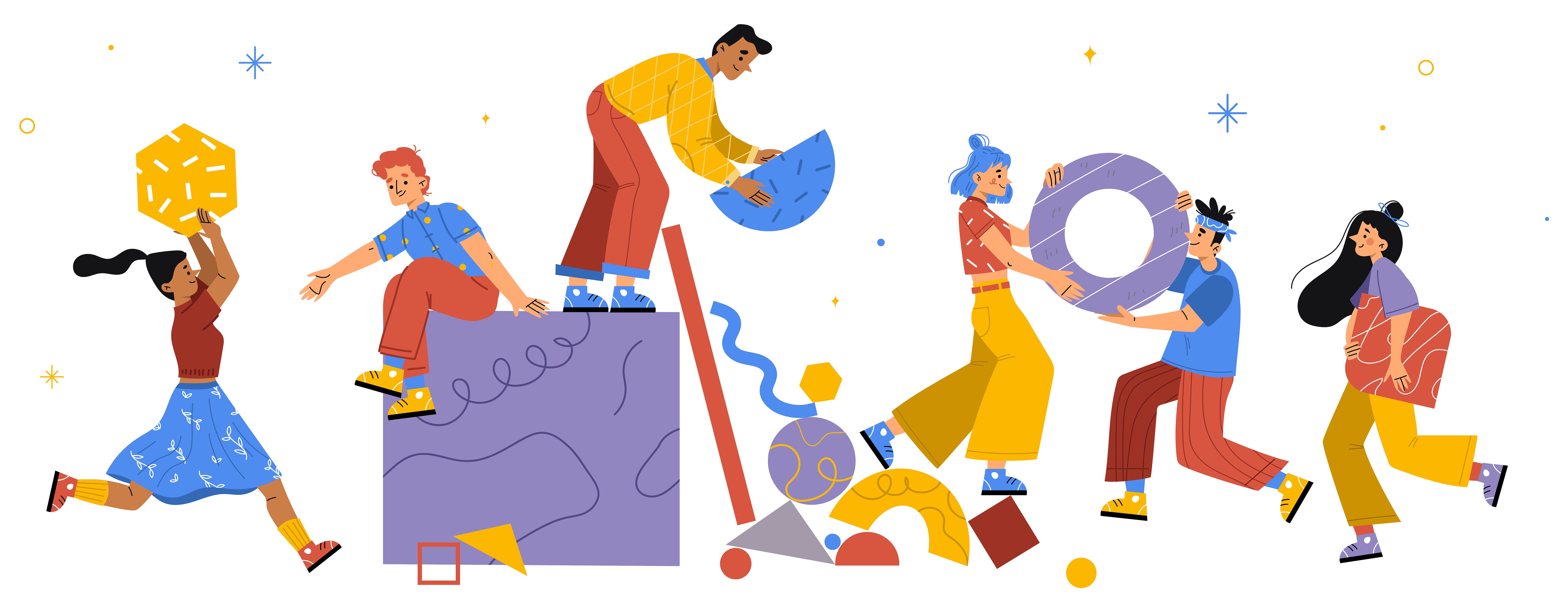
Balance isn’t about managing your time perfectly all the time; it’s the weekly act of noticing where life is leaning and gently pulling it back before it breaks.
The teams that endure don’t rely on willpower; they build small, steady guardrails that hold even when the week turns messy. After 18:30, only P1 work stays on the table. If something truly can’t wait, it already has a clear path and owner.
Treat your brain like a battery: protect your green hours for deep work, and stop pretending it’s still full at 22:37, that’s not brilliance, that’s decision fatigue.
Keep one protected block each week where you focus on a single task until it’s done. Let your calendar work for you, not against you. If two meetings line up, the third becomes an email. Shorten slots to 25 or 50 minutes so there’s breathing space, and use clear async briefs (Goal → Context → Outcome → Deadline → Owner) to cut noise and save energy (Nielsen Norman Group).
Make capacity visible; a simple green, amber, or red signal helps teammates find you before you overload. And when pressure spikes, plan both the sprint and the cooldown. Psychological safety is the net that keeps you shipping clean, even under heat. This isn’t soft stuff; it’s how you avoid burnout, which is an occupational risk, not a personal failure.

Start small, like we do at WIARA: one single-thread block, a real shutdown ritual, and P1-only after 18:30. Keep it for two weeks and see what changes.
If the room feels calmer and the work flows sharper, that’s balance quietly doing its job.

Deadlines don’t care about birthdays. Launches don’t check your calendar. Incidents love Friday nights. If you expect symmetry, you’ll always feel like you’re failing.
At WIARA, we learned that balance isn’t a destination; it’s a rhythm you renew. Some weeks pull harder at work, others at life. The real skill is spotting the tilt early and rebalancing on purpose, before quality drops, before sleep fades, before frustration grows.

Many smart, kind people try to muscle through: “I’ll just push harder this sprint.” It works for a few days. Then caffeine stops helping, and the tone in Slack sharpens. The fix isn’t more willpower. It’s gentler systems. Less “push through,” more “make the right thing easy.”
Cognitive load is a budget you can’t overspend without paying interest (NN/g). Decision fatigue slowly dulls judgment as choices pile up. And teams that last protect psychological safety like oxygen. When we ignore these truths, burnout doesn’t crash in; it seeps quietly.

That’s why we stopped treating balance like a mood and started treating it like ops. We built guardrails we can keep even on messy days, used kind and precise language, and designed push and recovery like cycles, not accidents.
Because waiting for calm never works; designing it does.
🧭 Want to see how we pace our sprints and design our calm?
Read How We Plan, Execute, and Improve Every 2 Weeks at WIARA.
"If you don’t define your limits, exhaustion will define them for you."
If everything feels urgent, nothing truly is. And expecting people to guess the difference, especially at 22:37, is how polite burnout begins. Most of us don’t break because of one huge project. We fray slowly, from tiny, unclear asks and “just a quick check” messages that chip away at rest.

That’s why urgency must be visible. After 18:30, only P1 moves. Weekend chats stay muted by default. Anything truly critical already has a name, a path, and an owner. This isn’t cold or rigid, it’s how respect looks in action: respect for real lives outside screens, and for work that needs a rested brain to stay sharp.
So when someone asks, “Can you take a quick look tonight?”, meet it with kindness and clarity: “If it’s P1, yes. If not, I’ll pick it up at 9:30.”
Boundaries like this don’t close doors; they add hinges. They stop the quiet leak of attention into late hours and turn evenings back into real rest. And when rest becomes non-negotiable, mornings arrive lighter, sharper, calmer.

Try keeping one boundary steady for two weeks, no experiments, no exceptions. You’ll feel it in your tone, your patience, your focus.
That’s balance quietly doing its job.
"A packed calendar doesn’t equal clarity, but energy spent wisely does."
Time is a container. Energy is the fuel. Treat them differently. You can fill a calendar with “productive” hours and still finish the day foggy if your best energy went to the wrong things.

Each of us has a crisp mental window, that sweet spot when thoughts connect faster and decisions land cleanly. Guard it. Use it for high-impact work: the deep thinking, architecture, writing, or those calls that define direction. Push alignment, check-ins, and reviews to later hours, when your brain is more social than sharp.
And don’t underestimate movement. A 15-minute walk mid-day clears more mental clutter than another drained “quick fix” at 19:50.
As the day fills with choices, judgment fades due to classic decision fatigue. That’s why we end with a shutdown: ten quiet minutes to write tomorrow’s first step, note what can wait, and decide what truly earns attention after hours. That final decision is the gatekeeper of your evening.
Stop forcing clarity on a red battery. Save deep work for green hours and let low-stakes tasks fill the grey ones.

Try placing a small walk or reset where your daily slump lives. Notice how your brain thanks you with focus that feels earned, not forced.
A day scattered across tabs, chats, and pings isn’t real work; it’s noise with a keyboard. Focus isn’t found; it’s designed.
Once a week, give yourself a quiet block, two or three hours, notifications off, one clear outcome on the table. Not “catch up on everything.” Just “finish this.” That one finished thing restores confidence in ways multitasking never can.

Every switch between tasks costs you attention. Single-threading gives that tax back. It’s not about doing less; it’s about letting your mind fully land on what matters.
Book that block now, like you’d book a doctor’s visit. Protect it. When you leave it behind, tired in the right way, proud of something actually done, you’ll wonder why you ever worked without it.
A calendar is a product; if you don’t design it, it designs you. And most of the time, it’s designed to squeeze, not support.

Start with small rewrites. If two meetings land back-to-back, let the third become an email. Set defaults to 25 or 50 minutes so each slot leaves air (Microsoft). Use the gaps to breathe, stretch, or simply think before the next context switch.
When the work is clear, skip the sync. Write a clean async brief instead, one that names the goal, context, outcome, deadline, and owner. Writing slows the mind just enough to sharpen it. It reduces noise and increases accountability.

Every clear message saves a meeting. Every thoughtful gap saves a sigh.
Make your calendar a quiet ally, not a loud master.
💡 Related: see how we protect creative focus in The Power of Creativity at Work.
Invisible load breeds bad assumptions. People mean well, they just can’t help what they can’t see.
Show where you stand, gently, openly. Maybe green means you can take one solid task; amber signals you’re at your edge, small reviews only; red means deep focus, no new work. It’s not confession, it’s navigation.

At WIARA, after we started sharing light capacity signals and quick check-ins, “I didn’t know you were slammed” disappeared. It became “Thanks for flagging, I’ll move it.” Transparency doesn’t weaken teams; it strengthens trust.
When everyone sees reality, you stop needing heroes and start building systems that breathe.
No one sprints a marathon, yet teams try, then act surprised when they cramp halfway.

Treat intensity like weather. Forecast it, pack for it, and plan the warm-down. Before a big push, pause for a quick pre-mortem. What’s most likely to break: people, process, or platform? Set light guardrails: P1-only after 18:00, no last-minute scope unless it truly prevents risk. Decide who backs up whom, and define the smallest shippable version if time slips.
During the push, keep ops humane. Rotate on-calls, jot fast decisions, ask daily what’s blocking flow. Afterward, design a cooldown, lighter meetings, focus on bug fixes, gratitude moments, earlier logoffs.
Without psychological safety, pressure speeds up mistakes. With it, trust compounds. The week after a launch is what everyone remembers. Make it kind, and the next one starts stronger.
Boundaries don’t need barbed wire. They can be soft, steady doors, clear, yet easy to open when it truly matters.
When a late favor arrives, answer with warmth: “Happy to take it first thing at 9:00. If it’s urgent, ping me sooner.” When scope shifts mid-sprint, invite choice: “If we add this, what moves?” The goal isn’t rejection, it’s alignment.

Vagueness breeds tension; specificity builds trust. Replace “I’m overloaded” with “Here’s what I can do, and here’s what would need to shift.” You stay open and grounded at once.
Clarity isn’t cold. It’s kindness with structure.
Under pressure, teams often get louder, not wiser. That’s why language matters most when patience runs low.
Name the work, not the person: “This approach risks X because Y” lands softer, and smarter, than “You always…” Separate urgency from care: “Yes, the deadline is tight. Let’s trim scope so we still ship cleanly.” And always close hard weeks with repair, thank-yous, reflections, and lighter days.
Skip the hero stories. Heroes are tired people who need better plans.

At WIARA, we’ve seen tough weeks end with more trust, not less. The reason wasn’t luck. It was intention, in tone, in gratitude, in pacing. When culture survives the heat, it comes back stronger and steadier.

Before you close the week, take a breath and check five things:
-What three outcomes matter most next week?
-Do you have a single-thread block booked?
-Is there one meeting you’ll turn async?
-Have you planned one small recovery moment, a walk, a quiet hour, a hobby?
-And which boundary will you actually keep?
Do it for a month. Small moves compound into a steadier rhythm.
🧭 For some ways to reduce noise, see Progress Updates: Momentum, Blockers & Decisions.
Balance isn’t a medal you win once. It’s a quiet weekly choice: to treat yourself and your team like humans doing meaningful work, not machines chasing perfect weeks.
When we design for it on purpose, something soft and powerful appears. People last longer. The work gets sharper. The room feels kinder.

You don’t need an overhaul. Pick one small experiment: P1-only after 18:00, a real shutdown, or one focused block a week. Keep it for two weeks. Watch what shifts, your sleep, your patience, your output.
If you feel even ten percent lighter, that isn’t luck. That’s balance doing its job, and you giving yourself permission to keep it. And if you forget next week (because life), just notice and come back. Balance isn’t about never slipping. It’s about returning sooner, with kindness.

How we balance
FAQ

Look at real signals: after-hours spikes, postponed vacations, rework rates, or how safe people feel saying “I’m at capacity.”
Translate risk to impact. Fatigue raises incidents and rework. Suggest P1-only after hours, rotate on-calls, pilot for two weeks, and show results.
You don’t need more people; you need clearer rules. Fewer meetings, stronger briefs, visible load. Clarity scales better than headcount.
Stay specific and collaborative. “I can finish X by Friday with focus. If we add Y, we’ll need to move Z or shift the deadline.” People respect precision.
Yes. Less context switching means cleaner code and sharper calls. Clear urgency rules prevent fires. Designed cooldowns protect morale.
Only if it stays on the wall. When it shows up in calendars and rituals, you’ll see it in numbers: faster reviews, fewer errors, calmer launches.
Further thinking

Steady Under Pressure: Real Ways to Beat Workplace Stress (Without Losing Your Spark)

The Power of Emotional Intelligence at Work: Why It Matters Most in Tech Teams

Effective Time Management Techniques for Better Productivity: Proven and Smart Methods to Manage Your Time Efficiently

The Power of Creativity at Work: Why It Matters and How to Grow It in the Tech world (Without Forcing It)

Remote Work: How to Find Your Rhythm & Improve your productivity (While keeping your sanity)

How to Prepare for an Interview? (Without Turning Into a Robot)

Interview Process at WIARA: What to Expect

The Top Qualities Beyond Code: What Truly Makes a Developer Exceptional — from the Inside Out

Welcome to WIARA — Where Integrity Meets Innovation and People Always Come First 💡